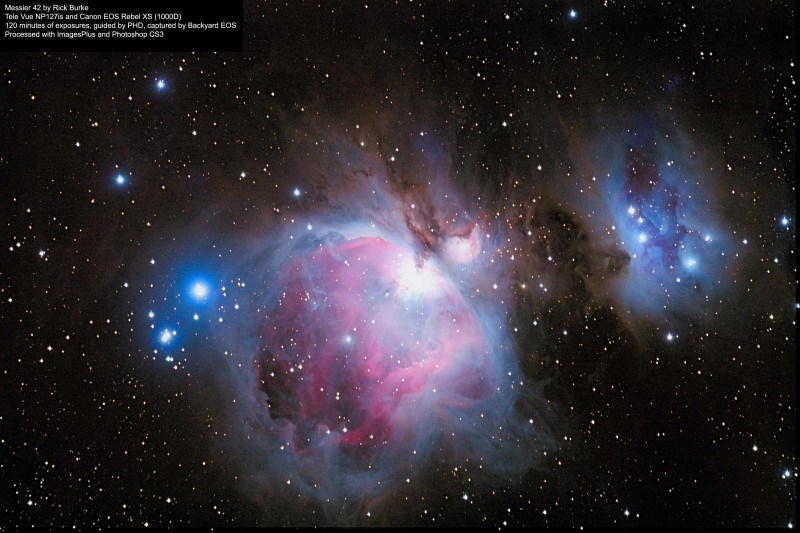

There was a good reason for choosing that path above and beyond your stingy Unk not wanting to buy a new guide camera: focusing. All things considered, I decided I would run the DSLR from a computer, just like a “real” CCD camera. But I didn’t have one, and that option would have meant yet mo’ money. I could use a “standalone” guider that didn’t require a computer.

Imagesplus vs backyardeos Pc#
I wouldn’t necessarily need a PC in the field for autoguiding, either. All I’d require to enable the XTi to take long exposures would be a simple and relatively inexpensive remote shutter release, a little wired remote.
Imagesplus vs backyardeos software#
All I was missing was camera control software for the Rebel.Īctually, I could have done without that. And I had a 66mm refractor and a Meade DSI to use for autoguiding. I also had the prime focus adapter I needed to hook camera to scope all I had to buy was a Canon EOS style T-adapter. The Celestron f/6.3 reducer – corrector worked well for my 35mm astrophotography back in the day, and the APS sensor in the Rebel was a little smaller than a frame of 35 film.

While the Rebel’s chip was larger than that of the ST2000, I didn’t foresee a problem there. What else? I had the f/6.3 focal reducer I’d used for years. After quite a lot of hemming and hawing, which you can read about here, I settled on Synta’s EQ-6 in the form of the Orion-badged Atlas EQ-G. I wanted to shoot with my C8, Celeste, and the CG5 she normally rode on wasn’t quite up to the task. Well, throw me in the briar patch, B’rer Fox. Quite a lot of new astro-stuff, it seemed. Why not shoot them in color with the new Canon? What would I need to do that? Finishing up Choosing and Using, I realized I was short a couple of deep sky astrophotos. Yeah, the printer managed to make the photos I turned-in look slightly ugly, but that is a story for another time and I was proud of what I submitted. The Rebel turned out to be an excellent terrestrial camera the images I shot for the book came out great. Every DSLR astrophotographer I spoke to and everything I read on the subject pointed me toward Canon. “Rebel XTi.” Why a Canon? I figgered if I were gonna get a DSLR, I might as well get one I could use for celestial as well as terrestrial picture taking. In the interest of quality, I decided it was time to join the DSLR ranks and purchased a Canon 400D, a.k.a. Specifically, I was doing the (terrestrial) photography for it. At the time, I was finishing my book, Choosing and Using a New CAT.

What to do? I thought about one of SBIG’s or somebody else’s one-shot color cameras, but the fates presented me another possibility. I like black and white, but I was hungry for color. That is not the sort of thing astrophotography bumbler Unk is likely to have much success with. That means exposing three shots through three filters to create a final color image. To get color images from this monochrome camera, for example, I’d have to resort to the dread tri-color imaging. However, it’s a fair amount of work to get images out of it. It produced and still produces amazing astrophotos. I loved my CCD camera, a black and white ST2000 from SBIG. Some years ago, Unk decided it was time to get on the Digital Single Lens Reflex (DSLR) bandwagon. My problem was they would not work with my new camera. Both are still good, if looking a little long in the tooth and rarely updated, and you could do way worse for imaging and guiding. I had to stop using the programs I’d cut my CCD teeth on, SBIG’s CCDops and Software Bisque’s CCDsoft. When I find something I like, I stick with it. I’m a stick in the mud when it comes to astronomy software, muchachos.


 0 kommentar(er)
0 kommentar(er)
